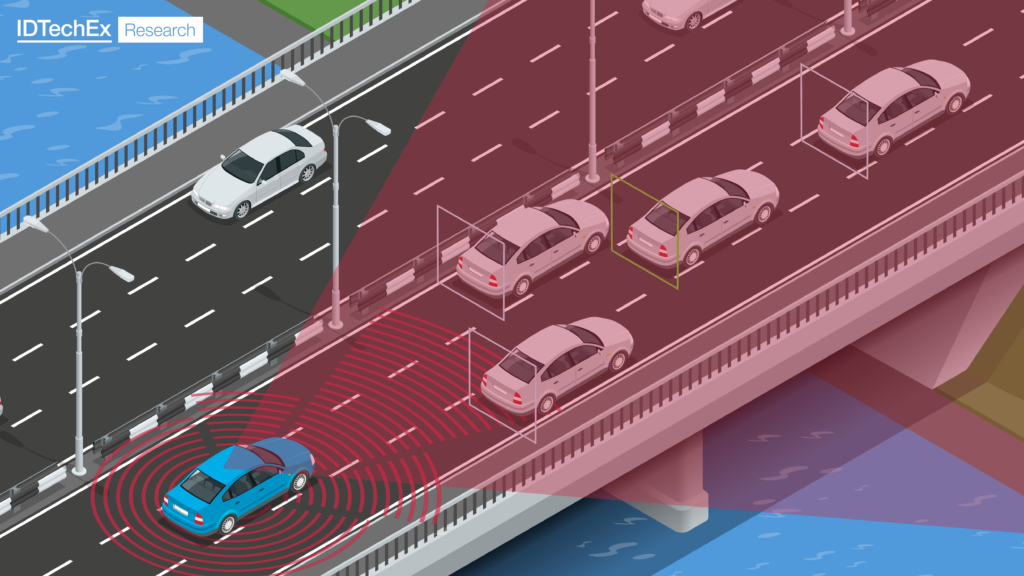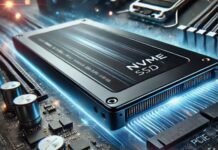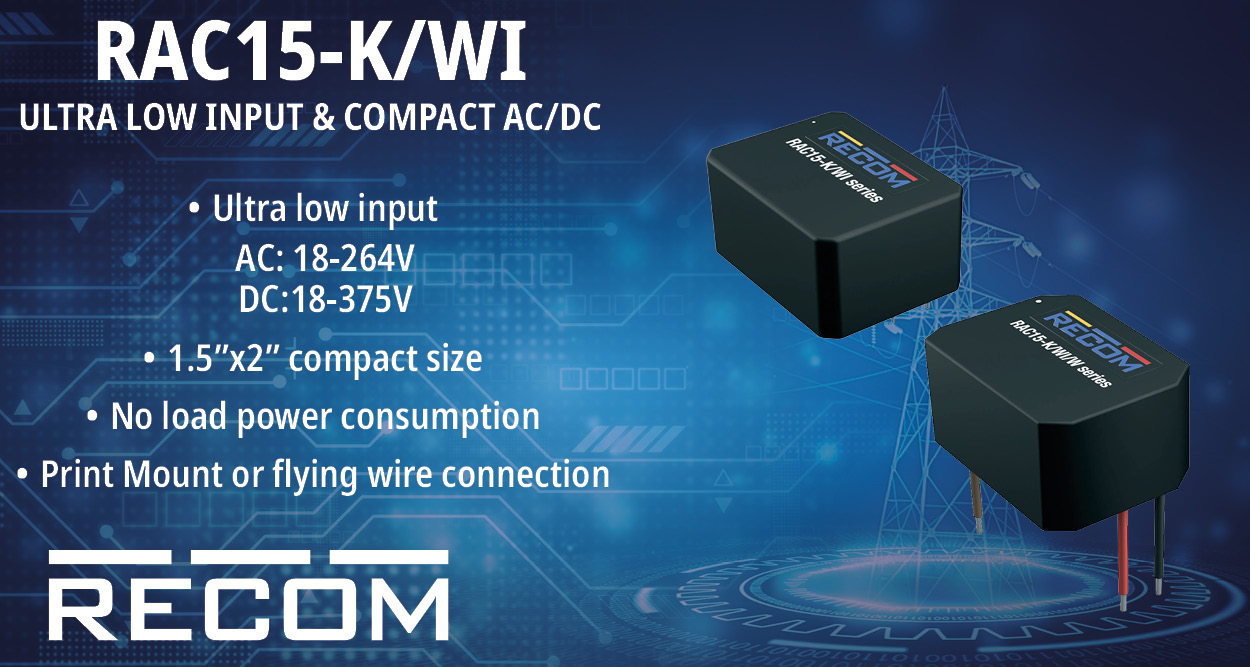Ross and Rachel’s relationship in the TV series Friends was characterized by its on-again, off-again nature, with the inevitability that they end up together in the end. Tesla started its full self-driving hardware with radar in 2016, it began the break-up with radar in 2021, and radar was removed from production entirely in 2021. But in 2023, Tesla released its Hardware 4.0 (HW4.0) update, and radar has re-entered the relationship, but for how long? The findings of IDTechEx’s market research report, “Automotive Radar 2024-2044: Forecasts, Technologies, Applications”, make a compelling case for the reunion to stick.

Tesla and radar
Tesla is undoubtedly a leader in both electric vehicles and automated driving technologies. It is also a pioneer and a trendbucker, being one of the only OEMs to attempt building an autonomous vehicle with camera alone. However, the tides appear to be changing; since May 2023, the Model S and Model X regained radar with the HW4.0 update.
In 2016, when Tesla first said it had all the hardware on its vehicles to create a fully autonomous car, it used eight cameras and one radar. Since then, its relationship with radar has soured, and in 2021, Tesla decided it would be better off without radar and abandoned the sensor. It was first removed from Model 3s and Model Y production, followed by the Model S and Model X in 2022. Older models had radar functionality sunset via over-the-air software updates. In 2023, Tesla technicians even began disabling the radar from some Model Ss.
The functionality of vehicles without radar didn’t change. They still possessed the same adaptive cruise control and lane keep assist ADAS functionalities. At first, there were some reports of reduced functionality in certain conditions, like adaptive cruise control maximum speed being reduced in heavy rain conditions. However, Tesla claims that modern incarnations of the “Tesla Vision” system have maintained and even improved on safety ratings compared to the previous radar-backed system.
In 2022, the FCC published certification documents showing that Tesla had been working on a radar. Some speculation emerged that the new radar would be using Arbe’s chip set. According to the benchmarking performed in IDTechEx’s “Automotive Radar 2024-2044: Forecasts, Technologies, Applications” report, Arbe has one of the leading technologies for automotive radar and would be a generational improvement over the radar that Tesla chose in 2016. The origin of this is an image posted by X user “greentheonly”, showing a list of vehicle configuration details and highlighting that under the radar section was the name Phoenix. Phoenix is also what Arbe calls its demonstration radar, which, combined with the companies’ previous testing relationship, is a strong indicator that Tesla’s radar could be using Arbe’s chipset.
Alternatively, IDTechEx thinks that based on the available images of the radar, Tesla could have developed a radar in-house using off-the-shelf chipsets from the likes of NXP, Texas Instruments, Infineon, or another prominent tier 2 supplier. This also falls in line with Tesla’s aggressive vertical integration approach.
HW4 was first released on the Model S and Model X at the start of 2023, soon followed by the Model Y. The main changes, in addition to the radar, include a new front-facing camera set with wider fields of view and higher resolutions, new B- and C-pillar cameras, and a new, more powerful ADAS computer with 144TOPs of processing power with a redundant SoC.
Modern radar performance
Radar is a powerful sensor, providing highly accurate distancing and relative velocity information. This makes it essential amongst most manufactures to enable systems like adaptive cruise control and automatic emergence braking. Its downside is that its imaging performance is far worse than that of a camera, and most systems will fuse camera and radar data to understand what is being detected. However, IDTechEx’s report “Automotive Radar 2024-2044: Forecasts, Technologies, Applications” shows that the new technologies available to radar offer significant performance potential.
Tesla would not have realized these new performance benefits with the dated unit that it was using up until 2020. The weaker performance of Tesla’s dated unit meant its system was susceptible to phantom breaking phenomena. This happens when the radar detects an innocuous object, like a manhole cover, and misclassifies it as a hazard, like a pedestrian on the road. The result of the misclassification is that the automatic emergency braking system will fire for no apparent reason. This creates an uncomfortable experience for the driver and passengers, and even though occurrences are rare, it can diminish the user’s trust in the technology.
In 2020, improving the system’s overall performance was possible by ditching radar and replacing it with machine learning and artificial intelligence-powered distancing using camera data. However, with modern radars that have more than ten times the performance of the unit used by Tesla in 2016, it is possible to do much better with radar than without. It’s no coincidence that the two OEMs certified for SAE level 3 operation so far, Honda and Mercedes, use five radars on their vehicles.
In previous generations of radar, like the ones Tesla would have considered in 2016, it was common to have angular resolutions in the range of 5° to 10° in the horizontal direction (azimuth). For comparison, the human eye has an angular resolution in the range of 0.005° to 0.01°. These radars also had no resolving ability in the vertical direction (elevation), which made them a 3D device – distance, azimuth & velocity – with rather blurry results. Combined with camera data, it was sufficient to identify that the car ahead was a certain distance away with an accompanying closing speed. But situations like vehicles stopped underneath bridges or in tunnel entrances were very difficult for radars to interpret correctly.
Modern radars, though, have significantly improved performance. The IDTechEx “Automotive Radar 2024-2044: Forecasts, Technologies, Applications” report explains how semiconductor, design, and technology evolutions have enabled recent performance gains. The result of these new technologies is that modern automotive radars are now capable of angular resolutions in the region of 0.5° to 2° in both the azimuth and elevation. With this performance gain, radars like Arbe’s can be used for object classification, which makes them immeasurably more valuable to the sensing stack.
Whether Tesla has gone for Arbe’s chipset, another tier 2 supplier’s technology, or done something entirely new, IDTechEx is confident that the performance gained through new technologies will be a great addition to Tesla’s already impressive system. Hopefully, this can be the end of Tesla’s Ross and Rachel radar relationship drama, and the two can now enjoy a long and successful partnership.

















